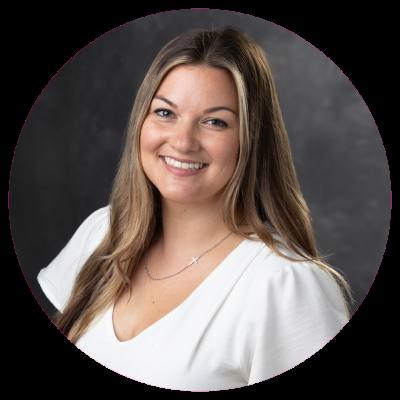"This is definitely sobering," said Tiffany Dunne-Oldfield, SISD chief of innovation and communications, during the survey presentation June 30.
SISD officials released the district's COVID-19 survey to parents and staff beginning June 24 and presented the results collected through June 29 to the SISD board of trustees at a special called meeting June 30. In total, 9,204 parents and 3,341 staff members completed the survey within that time frame. The survey results will be used to assist district officials in planning for the reopening of schools this fall. "We wanted to get a feel for how our community was feeling, too, in the COVID-19 environment because I think that's going to be very telling to us as we're planning and the sensitivity we need to have related to communication, but also in just some of the concerns about returning to in-person instruction and where the concerns lie with our families," Dunne-Oldfield said. "I don't think this should surprise any of us, but the stress of COVID-19 on our community, on communities around the nation—97% of our parents said they are concerned or somewhat concerned about the well-being of their family, [as did] 95% of our staff, and that's something that we need to be sensitive to in this work."
According to survey results, the leading COVID-19-related stressors for both parent and staff households include health concerns, loss of income, uncertainty of employment, loss of employment and illness/loss of self/family.
On the staff side, 90% of surveyed staff members said they plan to return to work in SISD for the 2020-21 school year, while 9% said they are unsure and 1% said they do not plan to return. Of those who plan to return, 47% said they were nervous about returning to their school or office and will need additional information about the district's plans to protect the health of staff and students before they feel comfortable returning.
Reflecting on remote learning, which took place for the remainder of the 2019-20 school year after schools closed statewide in mid-March, 43% of parents reported that their children struggled with remote learning lessons and assignments, while 47% said their children did not. According to survey results, leading challenges parents faced while supporting children with remote learning included difficulty understanding assignments; difficulty navigating the district's remote learning software, Schoology; difficulty submitting assignments and not having access to a computer, laptop or tablet.
While 6% of parents and 10% of staff said schools should reopen as close to normal as possible, 60% of parents and 48% of staff agreed schools should be virtual or online only until the COVID-19 situation is over. 34% and 42% of parents and staff, respectively, agreed schools should reopen with significant changes to lower the risk of spreading COVID-19.
Twenty-one percent of parents and 23% of staff agreed schools should focus on trying to get back to the way things were before COVID-19 as soon as it is safe to do so, while 79% and 77% of parents and staff, respectively, agreed schools should be focused on rethinking how to educate students and coming up with new ways to teach children moving forward as a result of COVID-19.
"Both our parents and staff, I think, understand that we are at a moment in time where the way we educate our students may never be the same, and we need to rethink that in light of COVID-19," Dunne-Oldfield said. "But it also gives us a glimpse that people understand that COVID-19 might not go away for awhile and that we really need to have a plan to reimagine the way we educate students."
In terms of planning for the fall semester, 84% of the 2,153 teachers surveyed favored giving teachers who are at high risk of COVID-19 infection first consideration for teaching assignments that could be done remotely. Likewise, 58% of parents and 52% of staff favored family or alpha grouping, meaning students in the same family would attend in-person school on the same day, while 42% of parents and 48% of staff favored grade-level grouping, meaning students in the same grade level would attend in-person school on the same day.
"As we look at the need to do alternating days, [we want] to do the grouping in a way that is supported by our community," Dunne-Oldfield said.
In the survey, district officials posed a series of COVID-19 precautionary options for both parents and staff, which yielded the following results.
- Elementary students are grouped in small units and stay together for all or most of the day in a single classroom, potentially even for lunch and electives.
- Parents: 49% favor, 23% oppose, 28% unsure
- Staff: 56% favor, 22% oppose, 22% unsure
- Students participate in teacher-supported remote learning from home on Wednesdays so campuses can be deep cleaned in the middle of the week.
- Parents: 76% favor, 11% oppose, 14% unsure*
- Staff: 79% favor, 9% oppose, 12% unsure
- School schedules and secondary transition periods are staggered so fewer students arrive and leave school at the same time and fewer secondary students are moving through school hallways at the same time.
- Parents: 64% favor, 14% oppose, 22% unsure
- Staff: 67% favor, 13% oppose, 20% unsure
- If significant social distancing is required, grades 3-8 should move to an alternating-day schedule, but students in grades pre-K-2 continue to attend class every day in their school building.
- Parents: 47% favor, 25% oppose, 28% unsure
- Staff: 45% favor, 29% oppose, 25% unsure*
- Restrictions are placed on certain high-risk activities, such as shared use of instructional equipment, in-person group projects and use of playground and gym equipment.
- Parents: 69% favor, 15% oppose, 16% unsure
- Staff: 72% favor, 16% oppose, 12% unsure
- All students and staff are required to wear a face covering in common areas and in enclosed spaces when a 6-foot distance between individuals cannot be safely maintained.
- Parents: 79% favor, 9% oppose, 11% unsure*
- Staff: 80% favor, 12% oppose, 8% unsure
Following the presentation of options throughout the survey, the district asked parents how comfortable they were in sending children back to the school in the fall now that they had learned more about the measures the district may take to reopen. In response, 41% said they felt comfortable sending their children back to school in the fall if the district takes the steps they support most, while 18% said they were unsure and 42% said they were still uncomfortable.
"So we saw parents by the end of the survey get more comfortable with looking at our hybrid model for coming back to school, which I think is a good thing and shows that we need to do more and be communicating more as we roll out our plans this week and all through July," Dunne-Oldfield said.
Adriana Rezal contributed to this report.





